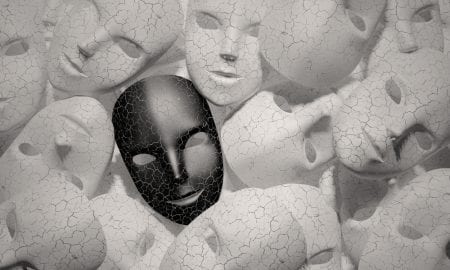
Stroke Risks In Young People And How to Identify Stroke-Like Symptoms

Stroke is usually thought of as something that happens in older people, but that doesn’t mean adults in their 20s, 30s, or 40s are too young either. In fact, an increasing number of not-so-middle-aged people are having strokes as well. Several factors can cause stroke in both the young and old, including obesity, hypertension, diabetes, and heart disease, but certain lifestyle habits can increase the risk in younger adults as well.
Strokes in children most often happen within the first month after birth. These are sometimes called perinatal or neonatal strokes. Most perinatal strokes occur during delivery or right after delivery when the baby doesn’t get enough oxygen while traveling through the birth canal. However, strokes that affect older kids and teens usually are caused by another condition that stops the flow of blood to the brain or causes bleeding in the brain.

Pixabay/ Pexels | In 2018, 1 in every six deaths from cardiovascular disease was due to stroke
Types of stroke
Ischemic strokes happen when blood flow is blocked through an artery that delivers blood to the brain. These strokes account for the vast majority of all strokes. Transient ischemic attacks, which are sometimes called “mini-strokes,” are different from ischemic strokes because these strokes block blood flow from the brain for a short period of time only, often, as short as five minutes. Like ischemic strokes, these strokes are also often caused by blood clots.
Although these are short-lived, transient ischemic attacks warn of future strokes and are medical emergencies. More than a third of people who experience these do not receive treatment and have a major stroke within a year. A hemorrhagic stroke is another type of stroke, which occurs when an artery in the brain leaks blood or ruptures. The leaked blood puts pressure on brain cells and damages them.

MART PRODUCTION/ Pexels | High blood pressure is the leading cause of stroke and is the main cause for increased risk of stroke among people with diabetes.
How to control stroke risks
Although having an underlying heart condition is out of your control, several studies have shown that many of the risk factors that make someone susceptible to a stroke later in life, such as high blood pressure, high cholesterol, diabetes, and obesity, are becoming more common in younger people.
Obesity has become an increasing factor since the percentage of obesity has prominently risen in children and teens in America. Obesity increases the risks for high blood pressure, high cholesterol and diabetes; therefore, it is important to eat healthy, fresh and unprocessed food and avoid drinking sugary beverages that are associated with risks of cardiovascular diseases. You should also control your salt intake and control your high blood pressure, which is another leading cause of stroke.
Symptoms
When it comes to stroke, the most common symptoms are the same no matter your age group. To quickly assess if someone is having a stroke, remember the warning sign acronym BE FAST, which stands for:
B: Balance – Watch out for a sudden loss of balance or coordination.
E: Eyes – Note any vision loss in one or both eyes, or double vision.
F: Face – People who are having a stroke commonly experience their face drooping on one side. Trying to smile is a good test.
A: Arm – Note any sudden weakness in one arm or leg
S: Speech – Sudden loss of speech or slurred speech
T: Time – If you have any of these symptoms, even if they go away, you need to go to the hospital.
A severe, sudden headache that is unlike any other headache you’ve had could also be a sign of a stroke.

Jonathan Borba/ Pexels | Goal setting is a powerful way to help motivate stroke survivors
Strokes can have devastating long-term impacts on people’s health and wellbeing regardless of their age. It is the leading cause of serious long-term disability in the United States. The severity of a stroke can depend on factors like the size of the damaged area in the brain and where the stroke occurs in the brain.
More in Heart Matters
-
`
Sara Hyland Discusses Her Mental Health Conditions And How She Managed Them
Sarah Hyland, who starred in Modern Family, revealed how close she was to committing suicide. She has recently given a candid interview to...
January 14, 2023 -
`
Can You Eat Just Before Bedtime? Here’s What Experts Say!
If you read health magazines or keep up with social media trends, you might have come across the notion that eating...
January 13, 2023 -
`
Postpartum & Parenting Transition: A Deeper Look
When it comes to being a real-life superhero, mothers wear all hats. They are guardian angels to their kids, carry out...
November 23, 2022 -
`
Do Diabetes Injections Really Help Lose Weight? Elon Musk Says It Does!
Losing weight is an aspiration of almost everyone today. Blame the junk foods that are ubiquitous these days or the lack...
October 25, 2022 -
`
The Best Weight-Loss Supplements For Men
Winter is right around the corner, which means there will be many days when you wouldn’t feel like doing anything except...
October 24, 2022 -
`
Merit Skin Care Products And Instant Glow Serum
With Great Skin and its Instant Glow Serum, the minimalist beauty brand MERIT, recognised for providing premium products that are healthy...
October 20, 2022 -
`
What Does A Transformative Self-Care Routine Look Like?
Self-care is not about fashion all the time. It simply means that you are conscious of what is happening inside and...
October 16, 2022 -
`
What Does It Take To Improve Your Heart Health?
It is no secret that heart diseases are growing among Americans. According to the latest report from CDC, 72% of Americans...
October 8, 2022 -
`
How To Revamp Your Home On A Budget
The space we live and spend most of our time in impacts the physical and mental state of our minds. Keeping...
September 22, 2022









